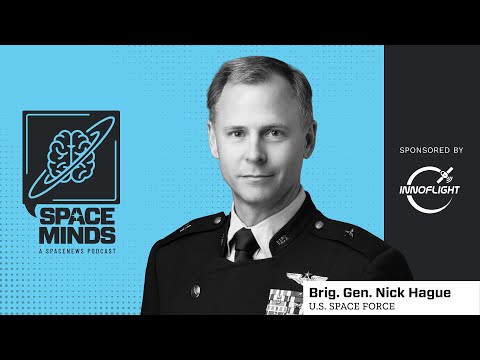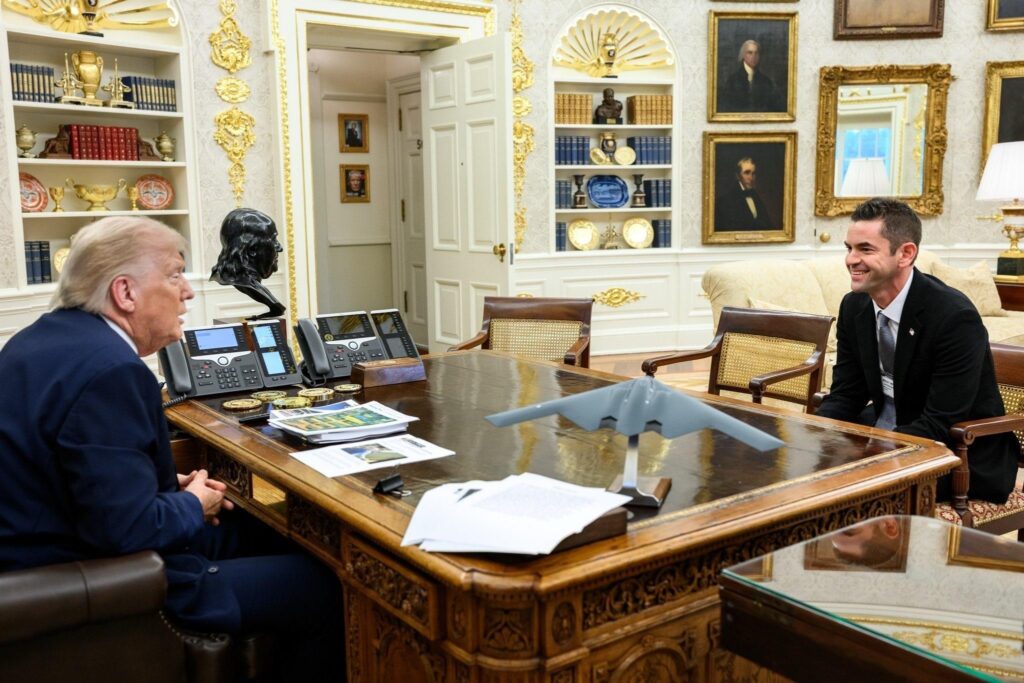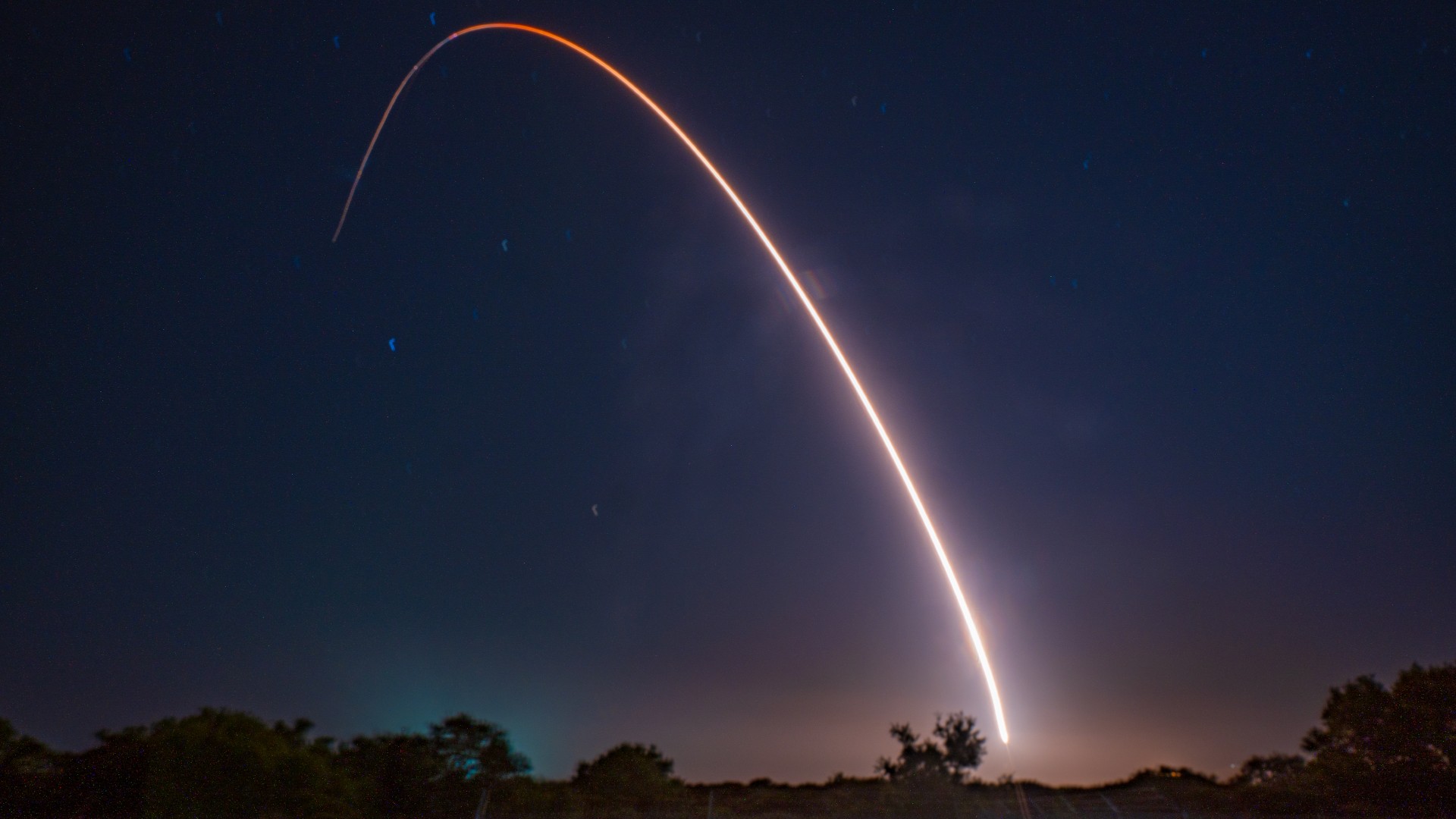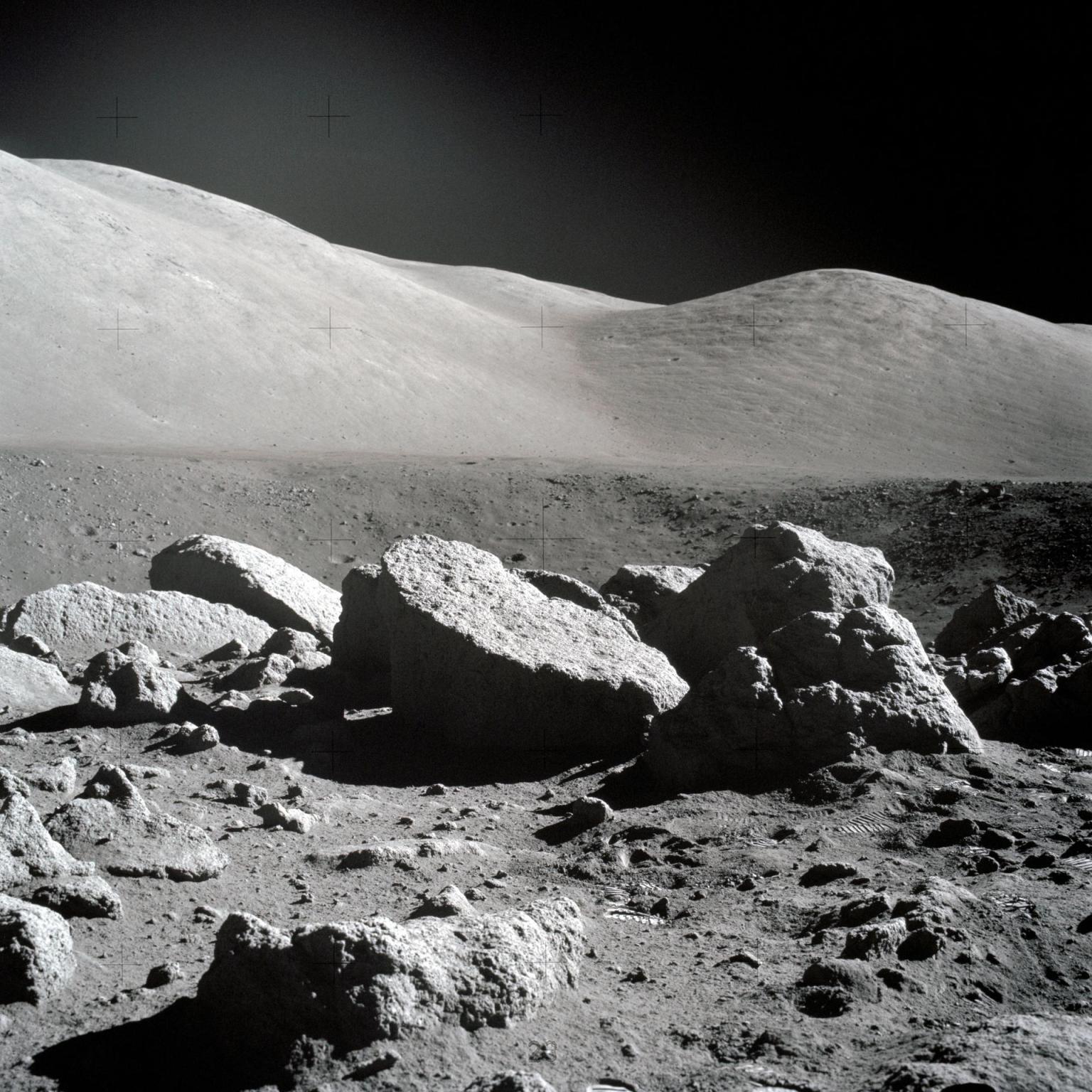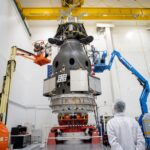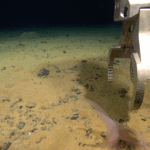Now Reading: Space Force and NGA move to end turf disputes with new intelligence agreement
-
01
Space Force and NGA move to end turf disputes with new intelligence agreement
Space Force and NGA move to end turf disputes with new intelligence agreement
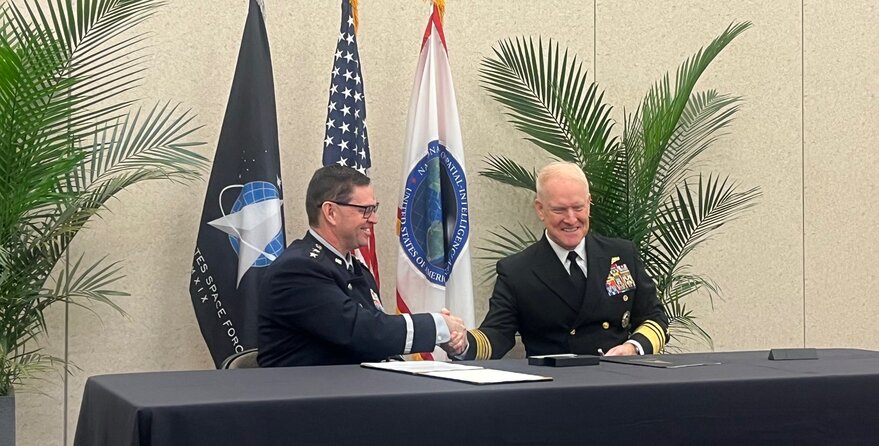

ST. LOUIS – The U.S. Space Force and the National Geospatial-Intelligence Agency (NGA) signed a memorandum of agreement May 21 aimed at clarifying their roles in delivering space-based intelligence to military commanders.
“It really is a marker that shows how deep the collaboration goes between our organizations,” Gen. Chance Saltzman, chief of space operations of the U.S. Space Force, said at the GEOINT Symposium, where he and NGA Director Vice Adm. Frank Whitworth signed the agreement in a joint appearance.
Saltzman and Whitworth said the agreement describes the agencies’ roles and responsibilities in acquiring and providing commercial imagery, remote sensing data and associated products, enhancing support to the combatant commands while minimizing redundancy and duplication of effort.
“We signed a piece of paper that explains the roles and responsibilities of each organization and how we’ll procedurally make sure that we’re doing this correctly,” said Saltzman.
The agreement comes amid increasing military demands for faster access to space-based intelligence, particularly commercial satellite imagery, which commanders say is crucial in rapidly evolving situations. Both NGA and the National Reconnaissance Office (NRO), which control funding and access to imagery satellites and analytics services, have faced criticism for creating bureaucratic bottlenecks that slow the delivery of intelligence to military combatant commands.
Whitworth described the MOU as “a new standard for collaboration.”
Long-standing tensions
“It has been a long time coming,” Saltzman said of the agreement.
The goal is to “lock down terms of reference and procedures that are so key to making this relationship work.” However, he cautioned that the memorandum itself is “just a piece of paper” and that successful implementation will require continuous cooperation moving forward.
“We both bring strengths to bear on this mission,” said Saltzman. The agreement “is a great step forward.”
He emphasized the importance of moving beyond organizational boundaries: “Set aside tribalism, organizational orthodoxy… and put a singular focus on mission and the creative solutions that focus inspires,” Saltzman added. “It doesn’t matter if your badge reads Space Force, Air Force, NGA, NRO or whatever else, all that matters is that you have a job to do, and that job is delivering quality intelligence to the customer. Collaboration across agencies is vital.”
Historically, the Department of Defense and intelligence community agencies have engaged in bureaucratic infighting over roles and resources. Saltzman said the Space Force, established in 2019 as the newest military branch, wants to strengthen collaboration with intelligence agencies.
Complementary capabilities
While the Space Force has built its own intelligence operations focused on space threats, Saltzman emphasized that relationships with organizations like NRO and NGA remain “more of a work in progress, and we owe it to ourselves and others to clarify it, because ambiguity benefits no one.”
The NRO operates spy satellites to collect imagery and signals intelligence, while NGA analyzes data from multiple sources to produce comprehensive intelligence products. “Now more than ever, the Space Force needs the eyes of the NGA and our IC partners,” Saltzman said. “Without their cooperation, we cannot achieve our objectives as rapidly and as effectively as the security environment demands.”
He stressed that the Space Force has no intention of duplicating existing intelligence capabilities: “We lack the depth and breadth of experience with which to do so. It makes so much more sense for us to align our efforts so that they complement the work that NGA and NRO have done, rather than an attempt to replicate it.”
Role of TacSRT
Former U.S. Director of National Intelligence Sue Gordon during a fireside chat with Saltzman at the symposium asked him to explain the role of the Space Force’s TacSRT program (Tactical Surveillance, Reconnaissance, and Tracking), which leverages commercial satellite imagery and data analytics to support military operations.
The program started as a pilot but has expanded into an online marketplace where commercial vendors bid for contracts to deliver data-driven insights.
Saltzman explained that TacSRT isn’t meant to compete with intelligence community products.
The new agreement with NGA, he said, “strengthens how we deliver fast, mission-ready products to the warfighter through our TacSRT program.”
“The technology we need to support the Space Force missions is different from the technology the NGA or NRO need to support robust intelligence gathering, analysis and dissemination,” he said. “That means industry needs to understand what the Space Force needs and how that differs from what the NRO needs or from what NGA needs.”
Saltzman acknowledged there will be overlaps but emphasized the need for broader thinking: “We need synergy, not redundancy. If we do things the way we always have, we’ll get the results we’ve always gotten. The security environment has changed, and we need to keep pace with it.”
The Space Force has seen positive feedback on TacSRT. “I hear stories from combatant commanders about how much they value the derived products from TacSRT,” Saltzman said. The Space Systems Command created a marketplace for service components to procure commercial support for specific mission needs.
“We’re talking about leveraging non-governmental sensors and data fusion to integrate publicly available information into fully releasable planning products, things we can freely give to uncleared allies and partners,” he explained. “It’s an incredible tool, both for making decisions but also for building relationships and trust.”
Under the new agreement with NGA, military operators will work directly with intelligence analysts. “This is not sitting around talking theory. This is getting into the business of ‘how do we do the work together?’” Saltzman said.
Clarifying roles
One source of tension between the Space Force and NGA has been defining what constitutes a “geoint product” meeting intelligence community standards — particularly important for military targeting decisions.
Saltzman clarified that TacSRT products aren’t intended to replace official geoint products. “It’s not really as important to decide, is the product geoint or not geoint? That’s almost a red herring,” he said.
“I don’t want anybody to think we’re going to take one of these products that was produced very quickly with very hastily written requirements and then do targeting,” he emphasized. “That would be a bridge too far, that would be using the product in a way it’s not designed.”
Instead, TacSRT provides rapid information for planners. Saltzman cited disaster response after an earthquake in Turkey, where commercial imagery was quickly obtained and shared with NATO partners and civilian agencies to assess damage and plan relief efforts.
“It was just a rapid way for them to have situational awareness about a situation, so they could make the right kinds of decisions and not waste resources,” he explained.
Saltzman reiterated that the Space Force’s approach complements rather than replaces traditional intelligence work: “It’s about speed, not resolution. It’s about breadth, not depth… So this is a complementary effort, not a replacement.”
Stay Informed With the Latest & Most Important News
Previous Post
Next Post
-
 012024 in Review: Highlights from NASA in Silicon Valley
012024 in Review: Highlights from NASA in Silicon Valley -
 02Panasonic Leica Summilux DG 15mm f/1.7 ASPH review
02Panasonic Leica Summilux DG 15mm f/1.7 ASPH review -
 03From Polymerization-Enabled Folding and Assembly to Chemical Evolution: Key Processes for Emergence of Functional Polymers in the Origin of Life
03From Polymerization-Enabled Folding and Assembly to Chemical Evolution: Key Processes for Emergence of Functional Polymers in the Origin of Life -
 04How New NASA, India Earth Satellite NISAR Will See Earth
04How New NASA, India Earth Satellite NISAR Will See Earth -
 05And Thus Begins A New Year For Life On Earth
05And Thus Begins A New Year For Life On Earth -
 06Astronomy Activation Ambassadors: A New Era
06Astronomy Activation Ambassadors: A New Era -
07SpaceX launch surge helps set new global launch record in 2024












